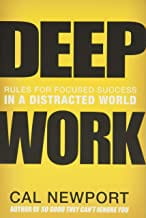It might make you knowingly nod to hear that researchers have proven that Zoom fatigue is a real thing. While I’m not suggesting that we don’t Zoom – frankly, Zoom saved our programs this last year – I am suggesting that we take note of known problems and solutions as we teach, learn, and connect.
Prompted by the recent boom in videoconferencing, communication Professor Jeremy Bailenson, founding director of the Stanford Virtual Human Interaction Lab (VHIL), examined the psychological consequences of spending hours per day on these platforms. The full article is here. A summary can be found below:
1) Excessive amounts of close-up eye contact is highly intense. Turns out that when someone’s face is that close to ours in real life, our brains interpret it as an intense situation.
Solution: Until the platforms change their interface, Bailenson recommends taking Zoom out of the full-screen option and reducing the size of the Zoom window relative to the monitor to minimize face size, and to use an external keyboard to allow an increase in the personal space bubble between oneself and the grid.
2) Seeing yourself during video chats constantly in real-time is fatiguing.
Most video platforms show a square of what you look like on camera during a chat. Studies indicate that when you see a reflection of yourself, you are more critical of yourself. Many of us are now seeing ourselves on video chats for many hours every day.
Solution: Bailenson recommends that platforms change the default practice of beaming the video to both self and others, when it only needs to be sent to others. In the meantime, users should use the “hide self-view” button, which one can access by right-clicking their own photo, once they see their face is framed properly in the video.
3) Video chats dramatically reduce our usual mobility.
In-person and audio phone conversations allow humans to walk around and move. “There’s a growing research now that says when people are moving, they’re performing better cognitively,” Bailenson said.
Solution: Bailenson recommends people think more about the room they’re videoconferencing in, where the camera is positioned and whether things like an external keyboard can help create distance or flexibility. For example, an external camera farther away from the screen will allow you to pace and doodle in virtual meetings just like we do in real ones. And of course, turning one’s video off periodically during meetings is a good ground rule to set for groups, just to give oneself a brief nonverbal rest.
4) The cognitive load is much higher in video chats.
Bailenson notes that in regular face-to-face interaction, nonverbal communication is quite natural and each of us naturally makes and interprets gestures and nonverbal cues subconsciously. But in video chats, we have to work harder to send and receive signals. For example, if you want to show someone that you are agreeing with them, you have to do an exaggerated nod or put your thumbs up. That adds cognitive load as you’re using mental calories in order to communicate.”
Solution: During long stretches of meetings, give yourself an “audio only” break. “This is not simply you turning off your camera to take a break from having to be nonverbally active, but also turning your body away from the screen,” Bailenson said, “so that for a few minutes you are not smothered with gestures that are perceptually realistic but socially meaningless.”
University, S. (2021, February 23).
Four causes for ‘Zoom fatigue’ and their solutions. Stanford News.
https://news.stanford.edu/2021/02/23/four-causes-zoom-fatigue-solutions/

 well and your lives are beginning to return to a somewhat more normal existence. It’s been great to gradually get out to see friends and family that we haven’t seen in person in over a year and getting all of us ESP members and 5-H’ers together this summer is on my mind. We have reserved our usual pavilion at Myers Landing Park in Lansing for Tuesday, August 10 at noon. I’ll send more details as we get closer to the date, but for now, save the date! Looking forward to a good day with good friends. (Written by Tom Dumas, Lead 5-H’er and friend to ESP)
well and your lives are beginning to return to a somewhat more normal existence. It’s been great to gradually get out to see friends and family that we haven’t seen in person in over a year and getting all of us ESP members and 5-H’ers together this summer is on my mind. We have reserved our usual pavilion at Myers Landing Park in Lansing for Tuesday, August 10 at noon. I’ll send more details as we get closer to the date, but for now, save the date! Looking forward to a good day with good friends. (Written by Tom Dumas, Lead 5-H’er and friend to ESP) As an extension educator with quality needed programing, I was confronted with low program participation. I question, is it the program topic or the marketing of the program?
As an extension educator with quality needed programing, I was confronted with low program participation. I question, is it the program topic or the marketing of the program? 2020 was a mind-bending, challenging year for most. A colleague recently recommended Deep Work, by Cal Newport as I complained that “man, there are so many things getting in the way of my big projects this year”. I’ve been listening to this one as I walk the dog in the morning – and happy to say – I am inspired.
2020 was a mind-bending, challenging year for most. A colleague recently recommended Deep Work, by Cal Newport as I complained that “man, there are so many things getting in the way of my big projects this year”. I’ve been listening to this one as I walk the dog in the morning – and happy to say – I am inspired.